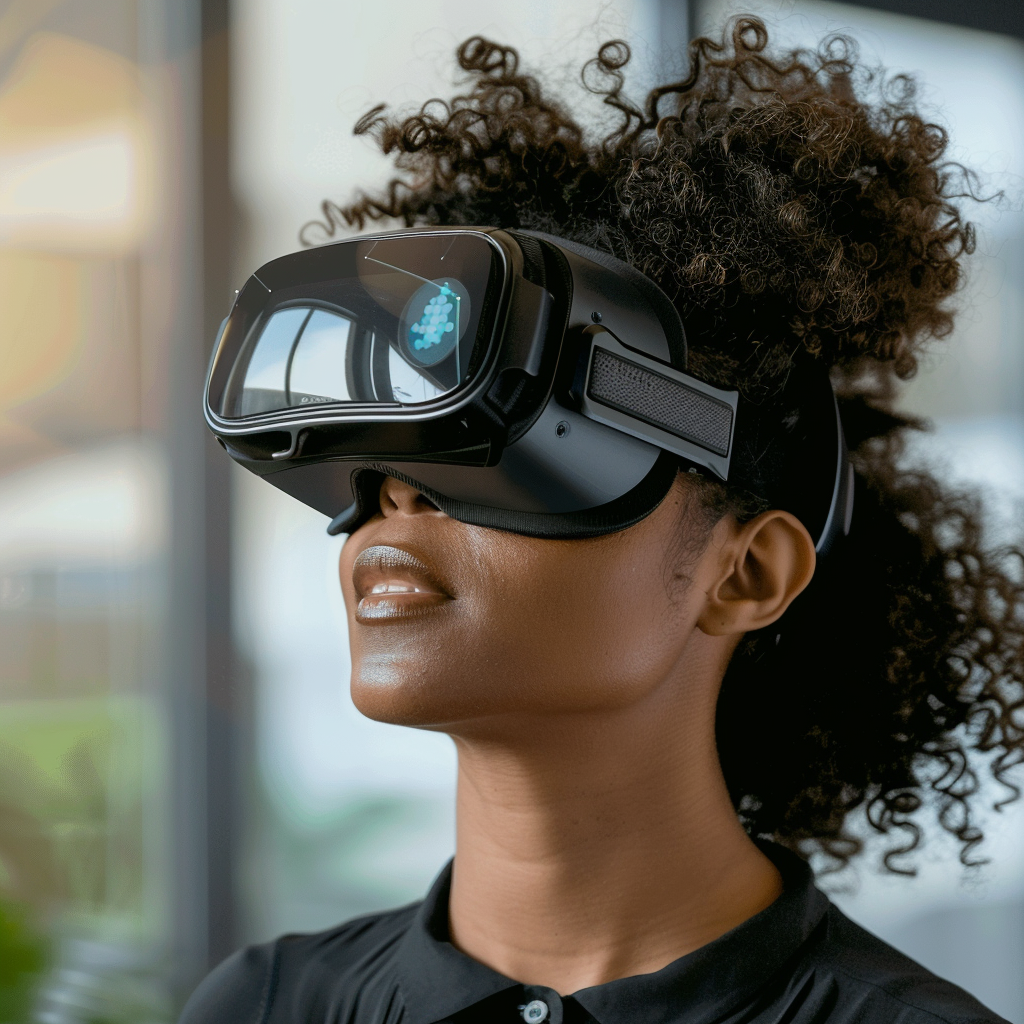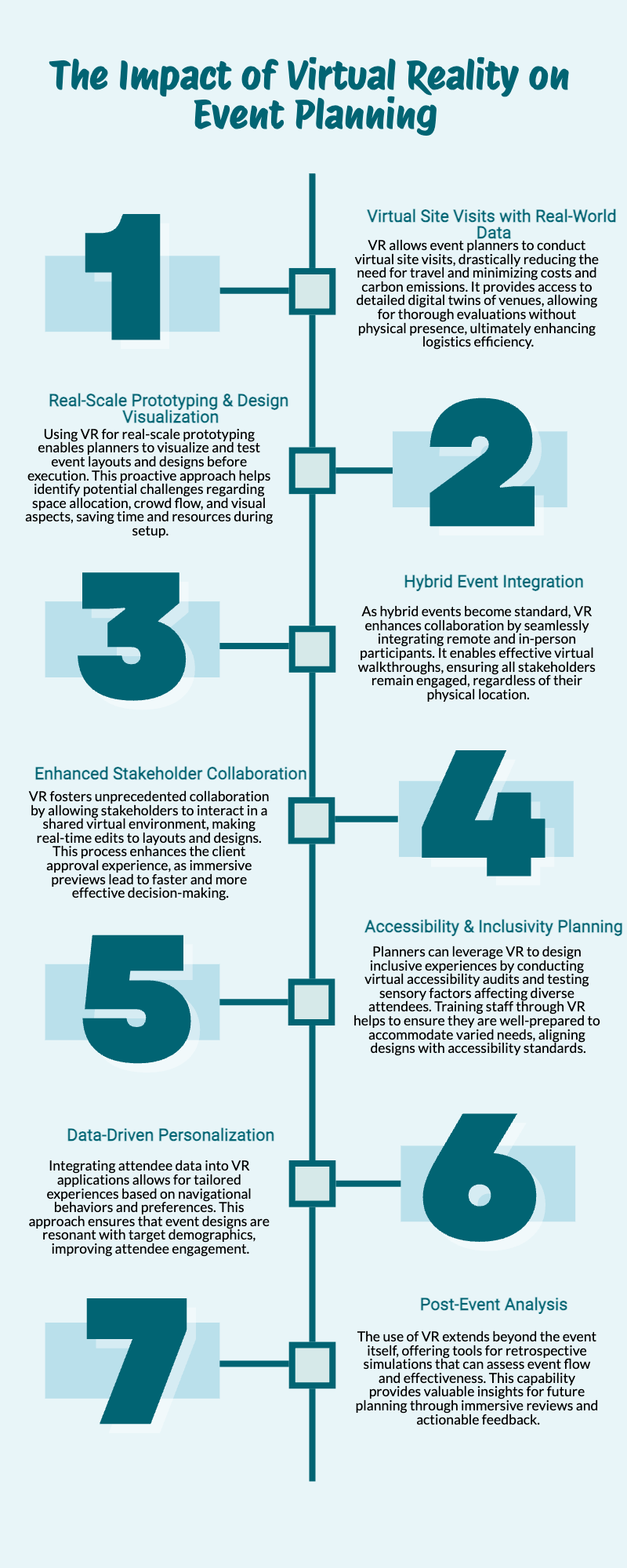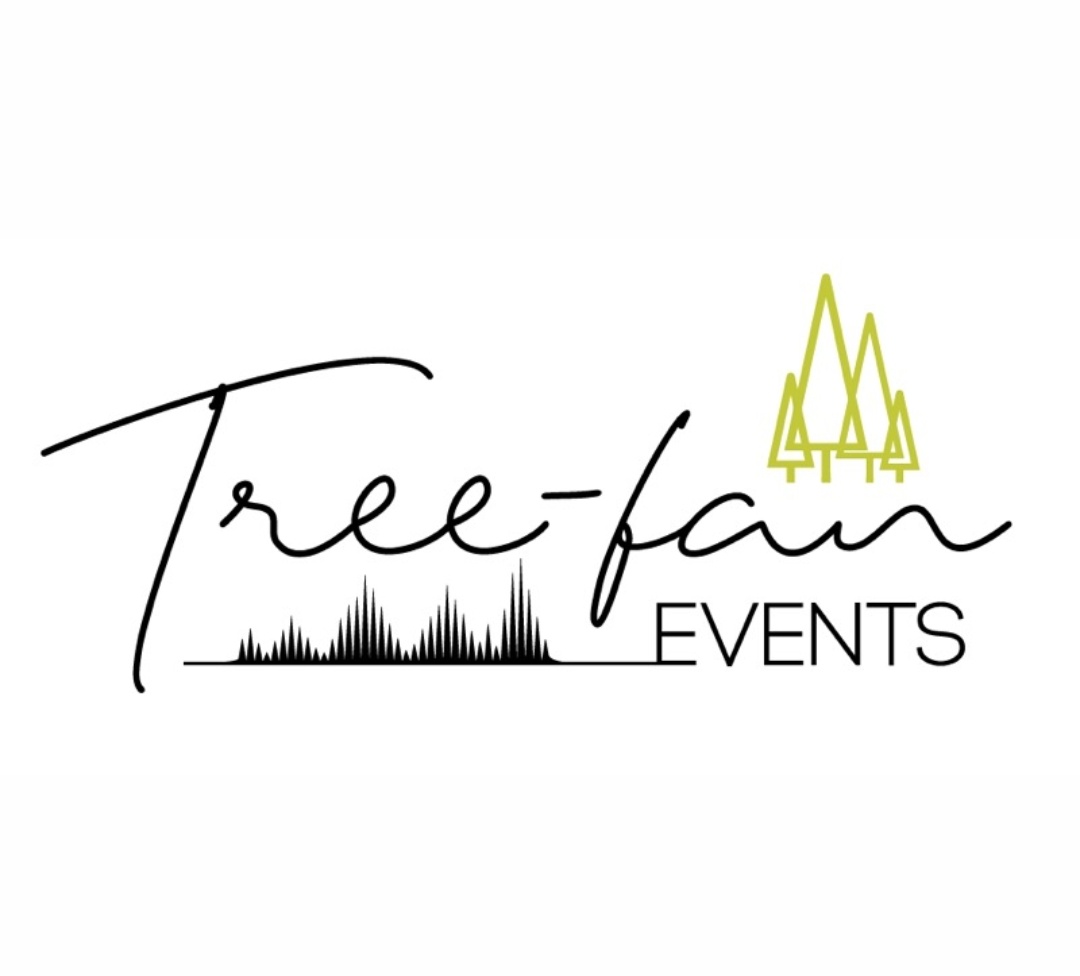Tangible VR Applications in Event Planning & Design (Beyond Content Generation)
Revolutionizing event logistics, design, and attendee experience through immersive technology
Virtual Reality (VR) is transforming event planning in ways that extend far beyond digital storytelling. From virtual site visits to hybrid event integration, VR is reshaping how we plan, visualize, and execute events. By bridging the gap between the digital and physical realms, VR empowers event planners to deliver seamless, inclusive, and efficient experiences.
 Virtual Site Visits with Real-World Data
Virtual Site Visits with Real-World Data
Eliminating the need for physical travel, VR enables planners to tour venues virtually and interact with highly detailed, accurate environments.
Key Applications:
- Reduce Travel Costs and Carbon Emissions: Explore venues worldwide from the comfort of your office.
- Detailed Digital Twins: Access precise dimensions, electrical outlet locations, and other critical details directly in VR.
- 360° Camera Integration: Enhance virtual tours with high-resolution, realistic visuals captured from actual venues.
💡 Takeaway: VR virtual site visits offer sustainable, cost-effective ways to evaluate and choose venues while streamlining pre-event logistics.
Real-Scale Prototyping & Design Visualization
Experience event layouts and designs in real scale, enabling you to identify and address potential challenges early.
Practical Benefits:
- “Walk Through” Your Event: Ensure sightlines, crowd flow, and space allocation work effectively before setup.
- Test Layouts Virtually: Experiment with seating arrangements, stage setups, and lighting configurations without physical trial-and-error.
- Optimize Camera Angles: Plan shot compositions within the virtual venue, especially when paired with AI-powered cameras for live event tracking.
💡 Takeaway: Use VR to preemptively troubleshoot layout issues, saving time and resources during on-site preparation.
Hybrid Event Integration

Hybrid events are here to stay, and VR provides a seamless way to integrate physical and virtual experiences.
Applications:
- Remote Collaboration: Allow geographically dispersed stakeholders to participate in virtual walkthroughs or planning meetings.
- Immersive Hybrid Experiences: Create VR spaces where remote attendees can engage with in-person participants or explore the venue virtually.
💡 Takeaway: VR bridges the gap between physical and remote audiences, ensuring alignment and engagement across all stakeholders.
Enhanced Stakeholder Collaboration
VR facilitates collaboration like never before, allowing multiple stakeholders to visualize and contribute in real time.
Features:
- Live Editing in VR: Stakeholders can interact with the virtual venue simultaneously, adjusting layouts and setups as needed.
- Client Approval: Offer clients immersive previews of designs, securing buy-in on key decisions more effectively than with static images or renderings.
💡 Takeaway: Streamline collaboration by enabling real-time feedback and approvals in an immersive, shared virtual environment.
Accessibility & Inclusivity Planning
VR enables event planners to design with inclusivity in mind, ensuring every attendee feels welcome.
Innovative Solutions:
- Virtual Accessibility Audits: Simulate experiences for attendees with disabilities, addressing potential barriers in the physical space.
- Sensory Sensitivity Testing: Evaluate the impact of lighting, sound, and environmental factors on individuals with sensory sensitivities.
- Inclusivity Training: Use VR to train staff in empathy, preparing them to better serve attendees with diverse needs.
💡 Takeaway: Align event designs with global accessibility standards like ADA and WCAG while fostering a more inclusive environment.
Data-Driven Personalization
Integrating attendee data with VR unlocks new levels of customization.
Key Applications:
- Behavior Modeling: Use attendee data to simulate navigation patterns and tailor layouts, engagement zones, or lighting preferences.
- Personalized Experiences: Optimize event designs for specific audience demographics or behavioral trends.
💡 Takeaway: Data-integrated VR helps you craft experiences that resonate deeply with your target audience.
Post-Event Analysis
VR continues to add value even after the event concludes.
Applications:
- Retrospective Simulations: Reanalyze event flow to identify inefficiencies or highlight successful elements for future planning.
- Visual Feedback: Share immersive replays with clients to discuss improvements or showcase success metrics.
💡 Takeaway: Use VR for actionable insights that improve event outcomes over time.
SEO-Optimized Highlights
- Meta Tags:
- Keywords: VR event planning, digital twins in events, VR accessibility in event spaces, virtual reality for event design.
- Meta Description:
Discover how VR is revolutionizing event planning with applications in design visualization, hybrid integration, accessibility audits, and more.
Structuring for Engagement
Visual Elements:
- Infographics: A flowchart depicting VR applications, from planning to post-event analysis.
- Case Studies: Include success stories illustrating cost savings, enhanced collaboration, or accessibility improvements.
- Video Content: Embed a short demo showcasing VR’s capabilities in event planning.
Final Thoughts: The Future is Immersive
VR is no longer just a tool for digital content—it’s a game-changer for physical event planning. By enabling virtual site visits, real-scale design visualization, hybrid integration, and accessibility audits, VR empowers event planners to execute with precision, efficiency, and inclusivity.
Call to Action
How could VR transform your next event? Let’s discuss how this cutting-edge tool can elevate your planning process. Reach out to us today!


